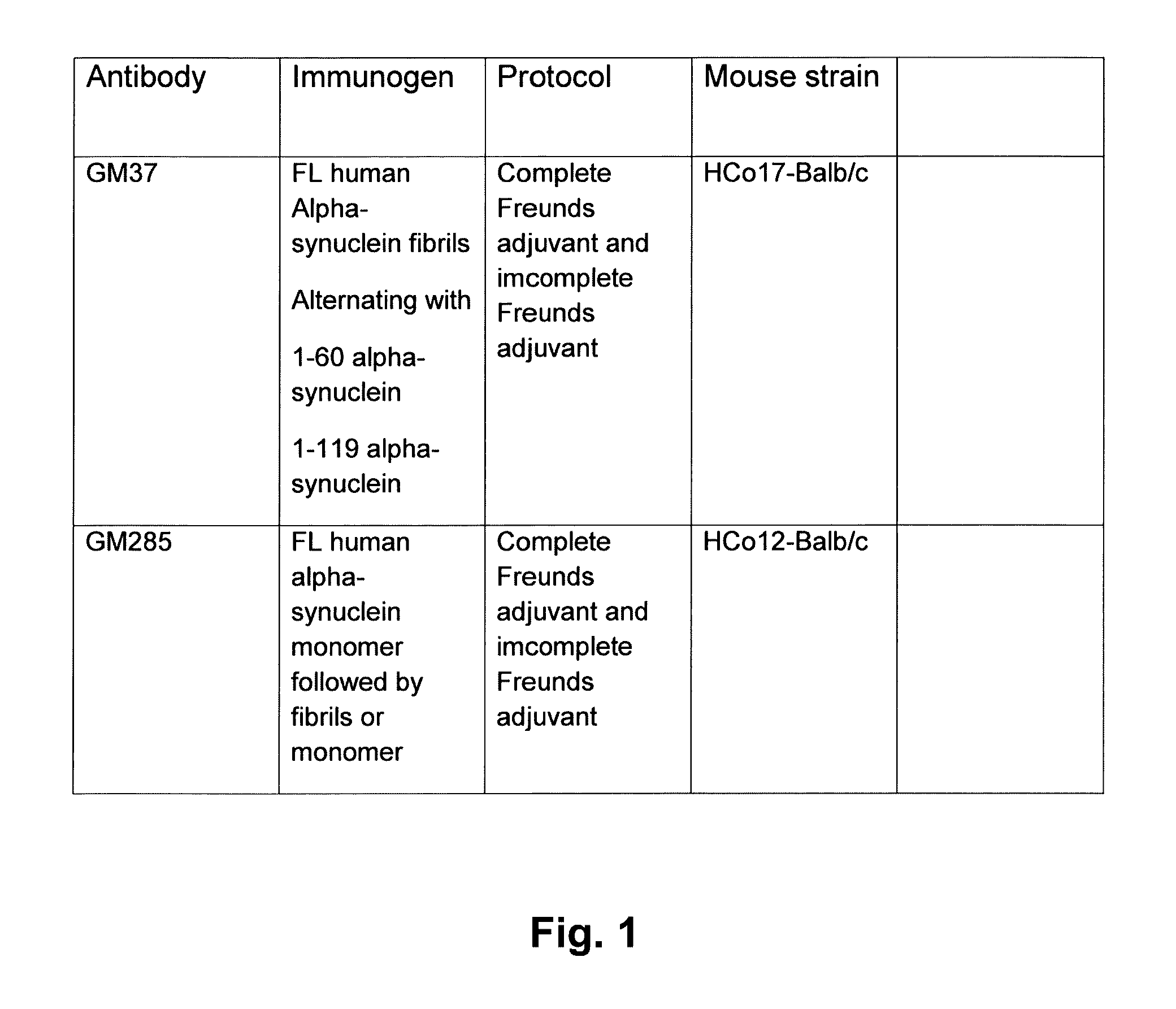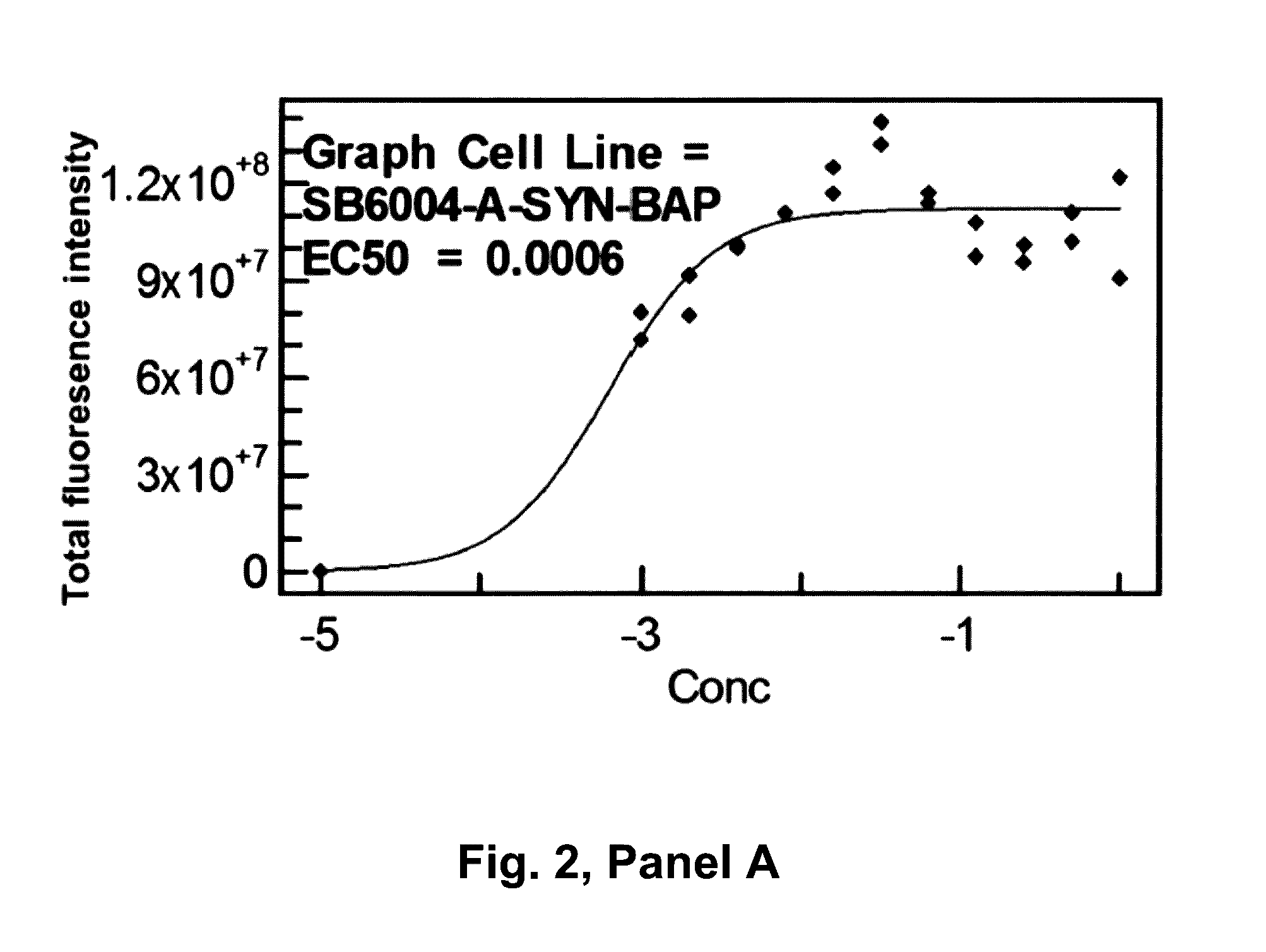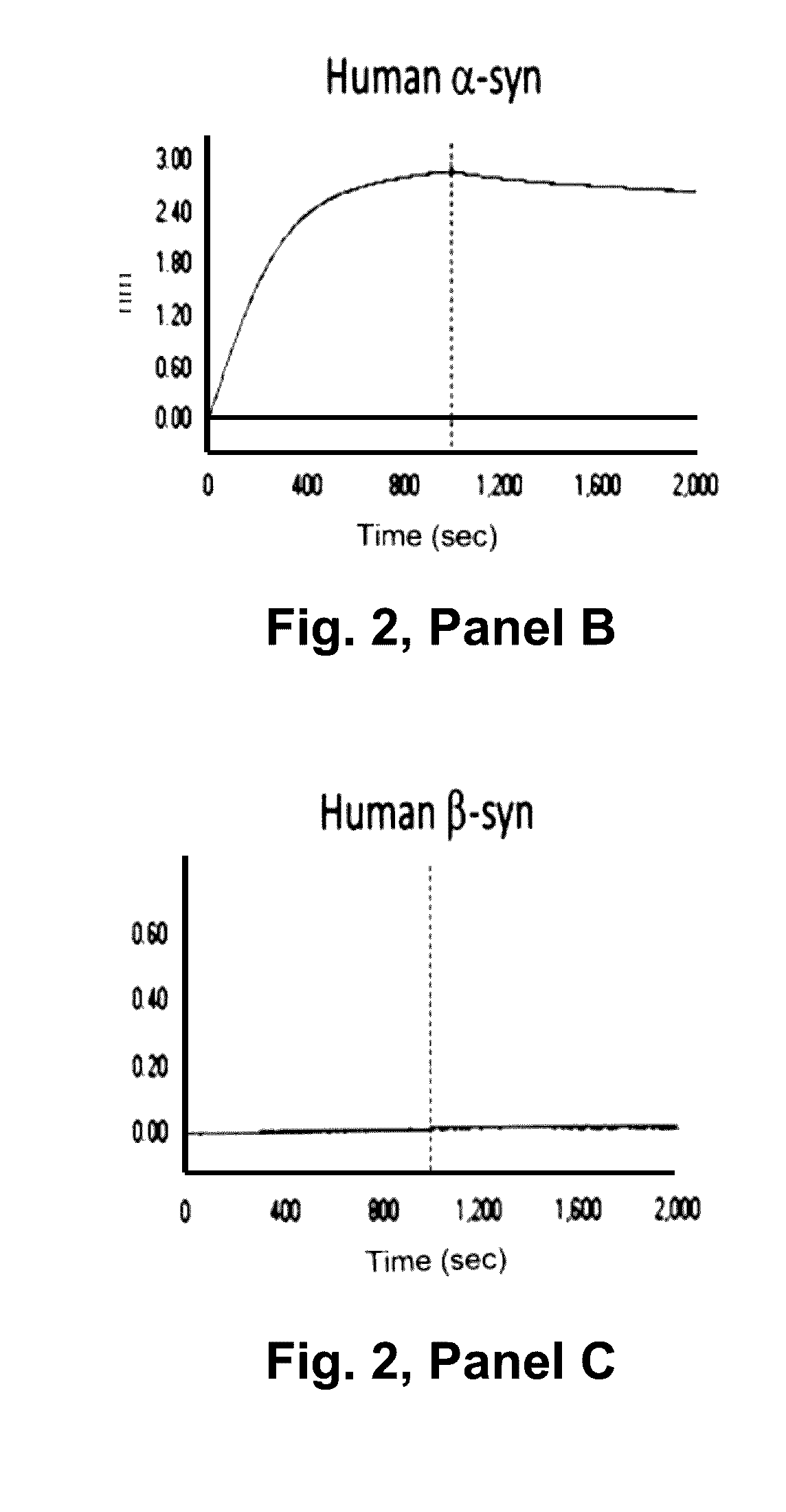Agents, Uses and Methods for the Treatment of Synucleinopathy
- Summary
- Abstract
- Description
- Claims
- Application Information
AI Technical Summary
Benefits of technology
Problems solved by technology
Method used
Image
Examples
example 1
Antibody Screening
1. Immunogen and Ligand Production
[0324]The following proteins were acquired or produced for use as immunogens shown in FIG. 1. The mice were immunized with three immunogens: full length recombinant human alpha-synuclein fibrils; human alpha-synuclein recombinant protein containing amino acids 1-60 (Rpeptide, Bogart, Georgia) and human alpha-synuclein recombinant protein containing amino acids 1-119. To make the fibrils from the full length the alpha-synuclein a lyophilized product from Rpeptide, Bogart, Georgia (Catalog number S-1001-2) was used. This was dissolved in 20 mM tris and 300 mM NaCl buffer at concentration of 1 mg / ml protein. To make the fibrils the protein solution was incubated 170 μl aliquots in 96 well plate with a 70 μm diameter ceramic bead in each well at 200 rpm in Vortemp 56 shaker incubator (Labnet International, Edison, N.J., USA), at 37° C. for 7 days, and the formation of fibrils was followed by adding thioflavin T and measuring fluorescen...
example 2
Antibody Characterization Using Surface Plasmon Resonance
[0351]Real time binding of the antibodies to alpha-synuclein was measured using a BlAcore® 3000. A capture surface was prepared by amine-coupling a polyclonal rabbit Anti-Mouse antibody (part of Mouse Antibody Capture Kit, GE Healthcare, Cat. no: BR-1008-38) in first flow cell (Fc1) and second flow cell (Fc2) of a CM5 chip (BlAcore®). The mouse antibody was captured in Fc2 at the concentration required to achieve a ligand level of around 500RU. The baseline was allowed to stabilize for 10 min before injecting analyte (ASynBAP) in Fc1-2 at 30 μl / min. ASynBAP was run at 100-3200 nM and 25-3200 RU, respectively. The highest concentration in each titration series was run in duplicate. The surface was regenerated with 10mM Glycine-HCl, pH 1.7 (30 sec inject) to remove captured mouse antibody and analyte in the end of each cycle. HBS-EP (GE Healthcare, Cat. No: BR-1001-88) was used as running buffer and sample diluent in all experim...
example 3
Epitope Mapping
[0353]Epitope mapping of the antibodies to alpha-synuclein was done with arrays of overlapping linear peptides at Pepscan (Pepscan Zuidersluisweg 2 8243 RC Lelystad, The Netherlands). The binding of antibody to each of the synthesized 20 mer peptides was tested in a Pepscan based ELISA. The linear peptide array covering the entire coding sequence of alpha-synuclein, as well as all peptides with oxidized methionines or nitrosylated tyrosines, were incubated with primary antibody solution (overnight at 4° C.). After washing, the peptide arrays were incubated with a 1 / 1000 dilution of an antibody peroxidase conjugate (SBA, cat. nr. 2010-05) for one hour at 25° C. After washing, the peroxidase substrate 2,2′-azino-di-3-ethylbenzthiazoline sulfonate (ABTS) and 2 μl / ml of 3 percent H2O2 were added. After one hour, the color development was measured. The color development was quantified with a charge coupled device (CCD)-camera and an image processing system. For data proces...
PUM
| Property | Measurement | Unit |
|---|---|---|
| Molar density | aaaaa | aaaaa |
| Molar density | aaaaa | aaaaa |
| Molar density | aaaaa | aaaaa |
Abstract
Description
Claims
Application Information
 Login to View More
Login to View More - R&D
- Intellectual Property
- Life Sciences
- Materials
- Tech Scout
- Unparalleled Data Quality
- Higher Quality Content
- 60% Fewer Hallucinations
Browse by: Latest US Patents, China's latest patents, Technical Efficacy Thesaurus, Application Domain, Technology Topic, Popular Technical Reports.
© 2025 PatSnap. All rights reserved.Legal|Privacy policy|Modern Slavery Act Transparency Statement|Sitemap|About US| Contact US: help@patsnap.com



